In Photos: Ancient 'Noah' Skeleton Discovered in Iraq
Ancient Skeleton
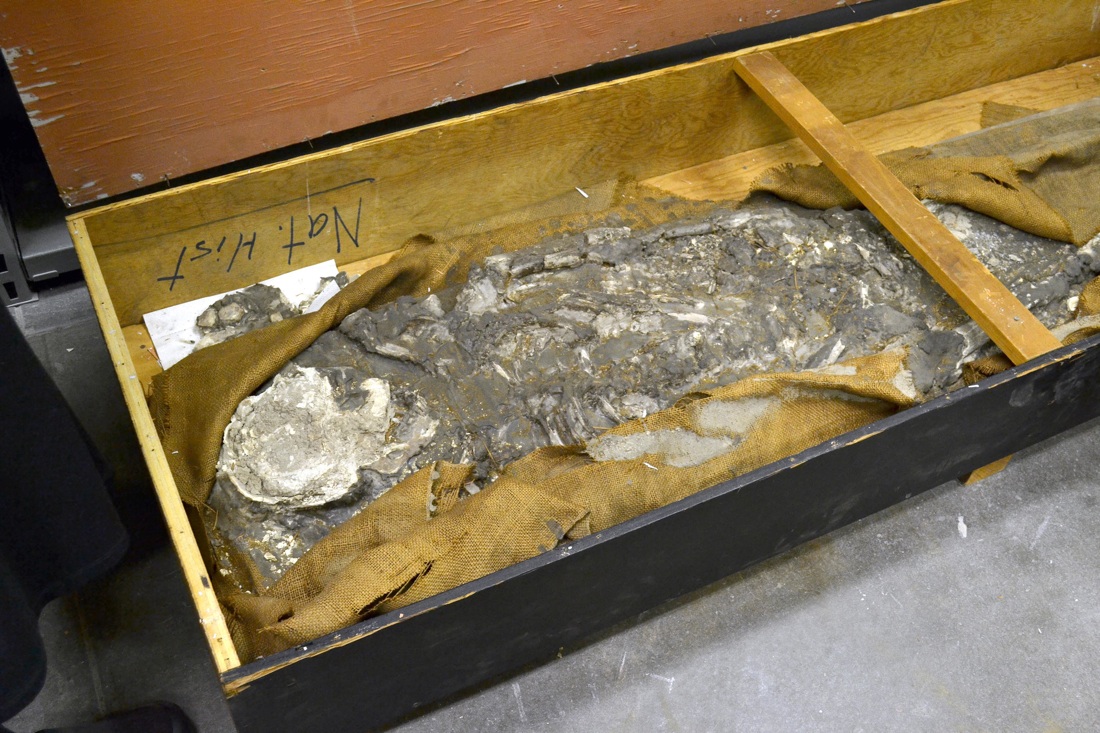
A 6,500-year-old skeleton rediscovered in the basement of the Penn Museum in Philadelphia was originally unearthed in 1929-1930 by a team of scientists led by Sir Leonard Woolley at the site of Ur in what is now southern Iraq. Here, the skeleton, which was coated in wax in the field and lifted whole along with surrounding dirt.
Studying a skeleton
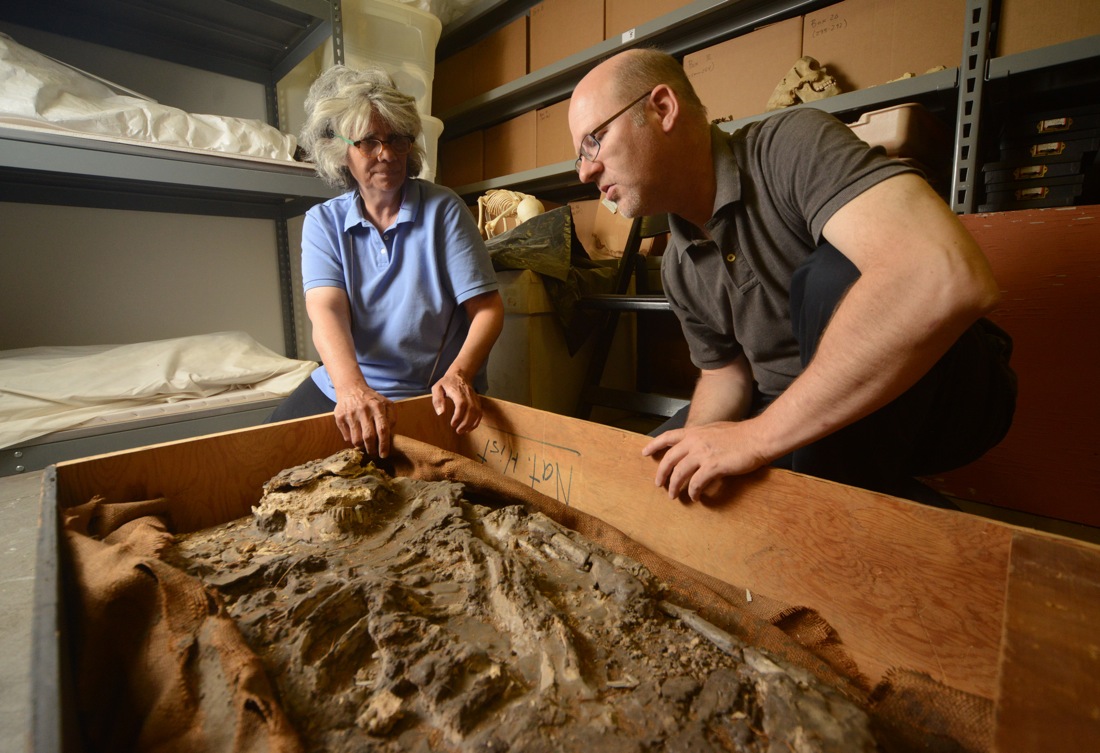
The skeleton was tucked away in a wooden box in a storeroom at the Penn Museum. It had no identifying numbers or catalog card. After the human remains were rediscovered, Janet Monge, curator-in-charge, physical anthropology section of the Penn Museum, and William Hafford, Ur Digitization Project Manager at Penn Museum, investigate the 6,500-year-old skeleton.
What Good Teeth ...
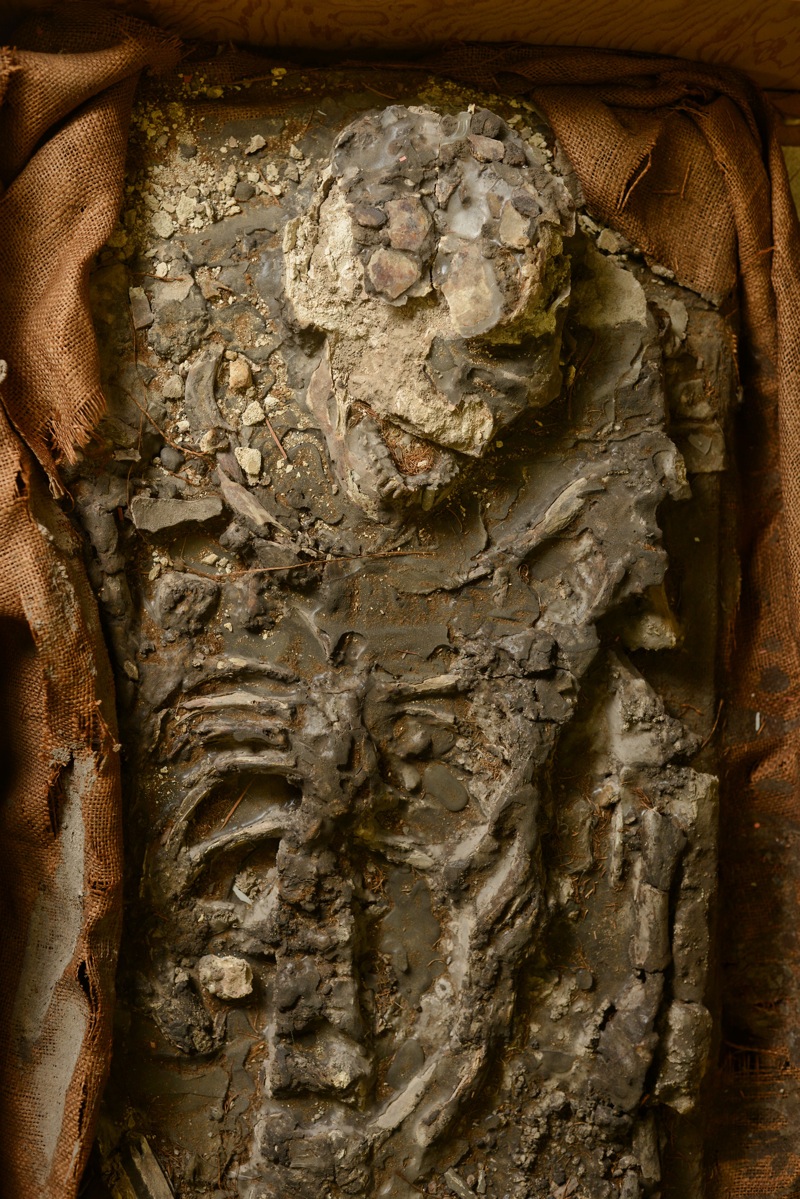
Here, a close-up of the upper body and skull of the 6,500-year-old skeleton discovered at the site of Ur. The teeth are well preserved.
Original Crate
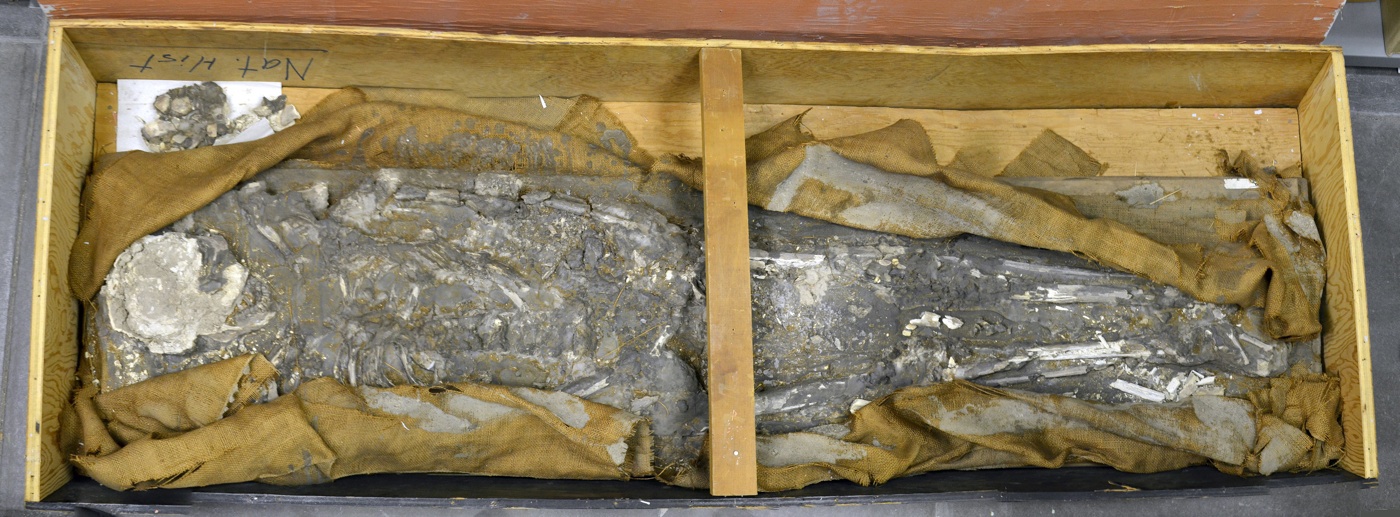
Composite image showing an overhead view of the 6,500-year-old skeleton in its original crate.
Ur Pottery
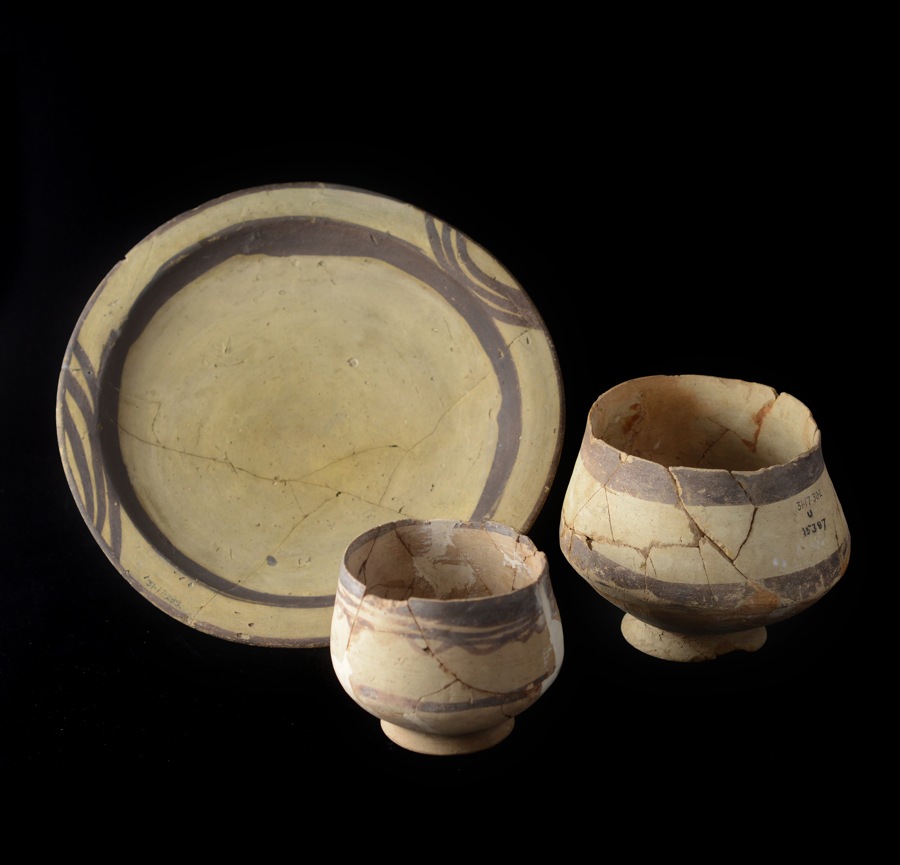
Pottery found at the foot of the skeleton during the excavation at the site of Ur in Iraq, now housed in the Penn Museum's Near East Section storage.
Ur Burial
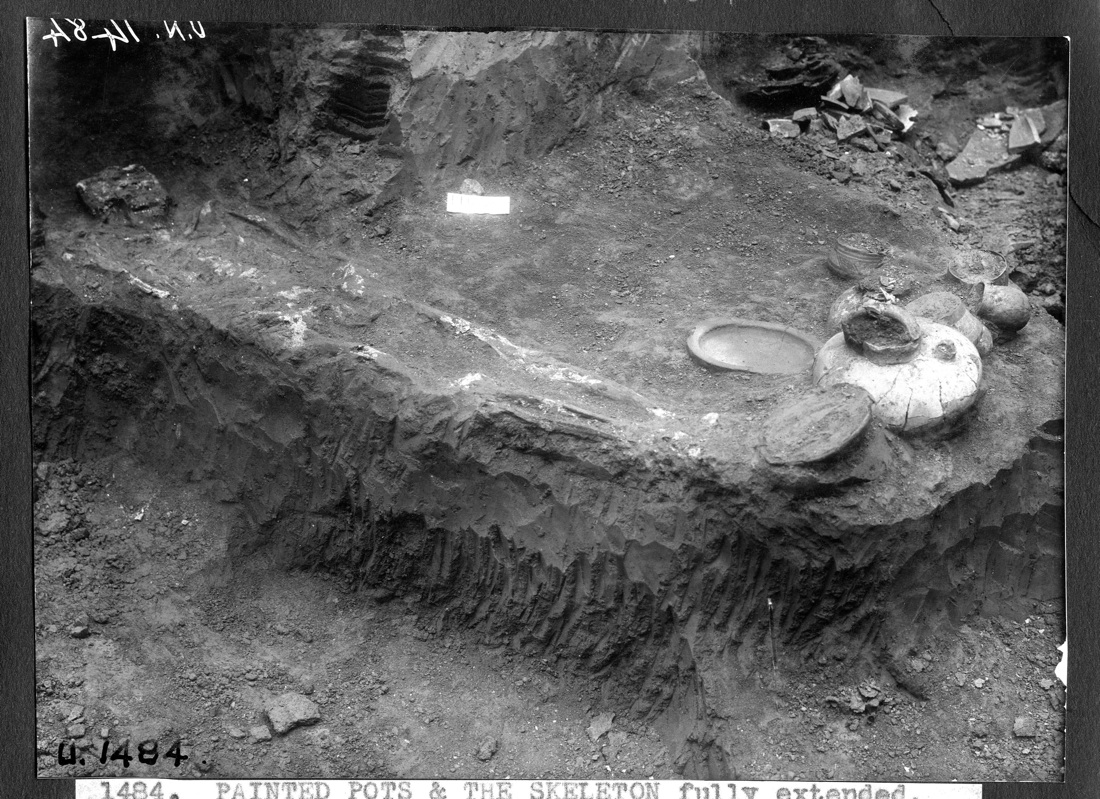
The burial with the 6,500-year-old skeleton (along with the semi-crushed skull and pottery at the feet) in the silt deposits, as excavated at Ur during the 1929 to 1930 field season.
Plaster Protectoin
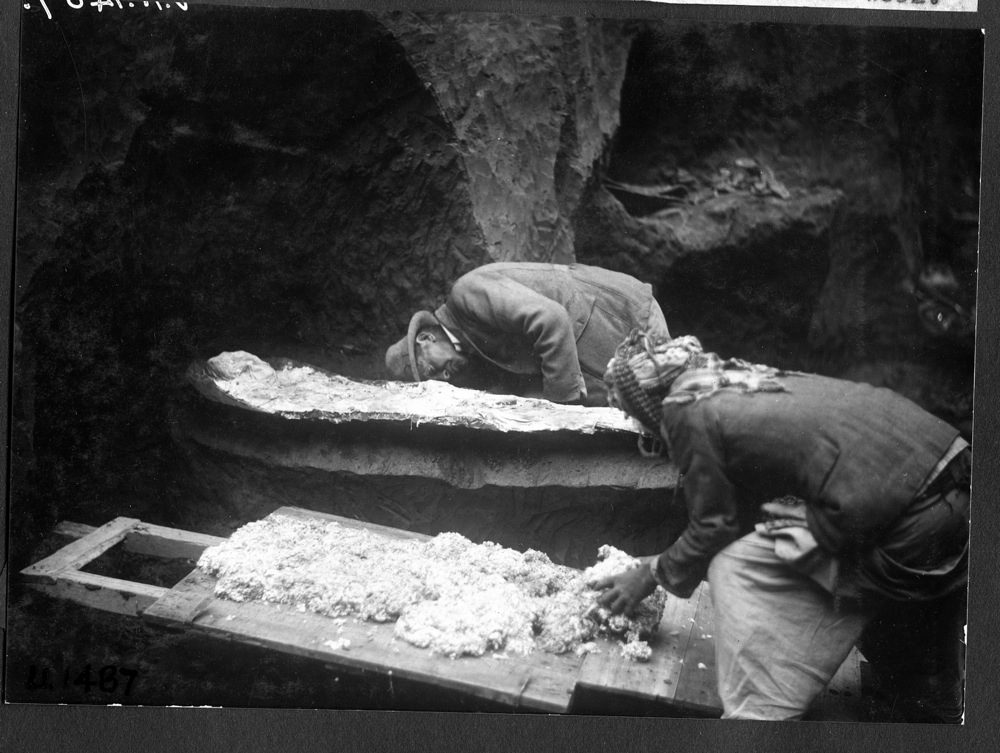
A lightweight plaster mixture is placed over the covered skeleton to protect it during shipping. The silt is already being cut away under the skeleton to make room for the carrying board.
Sign up for the Live Science daily newsletter now
Get the world’s most fascinating discoveries delivered straight to your inbox.
Carrying a Skeleton
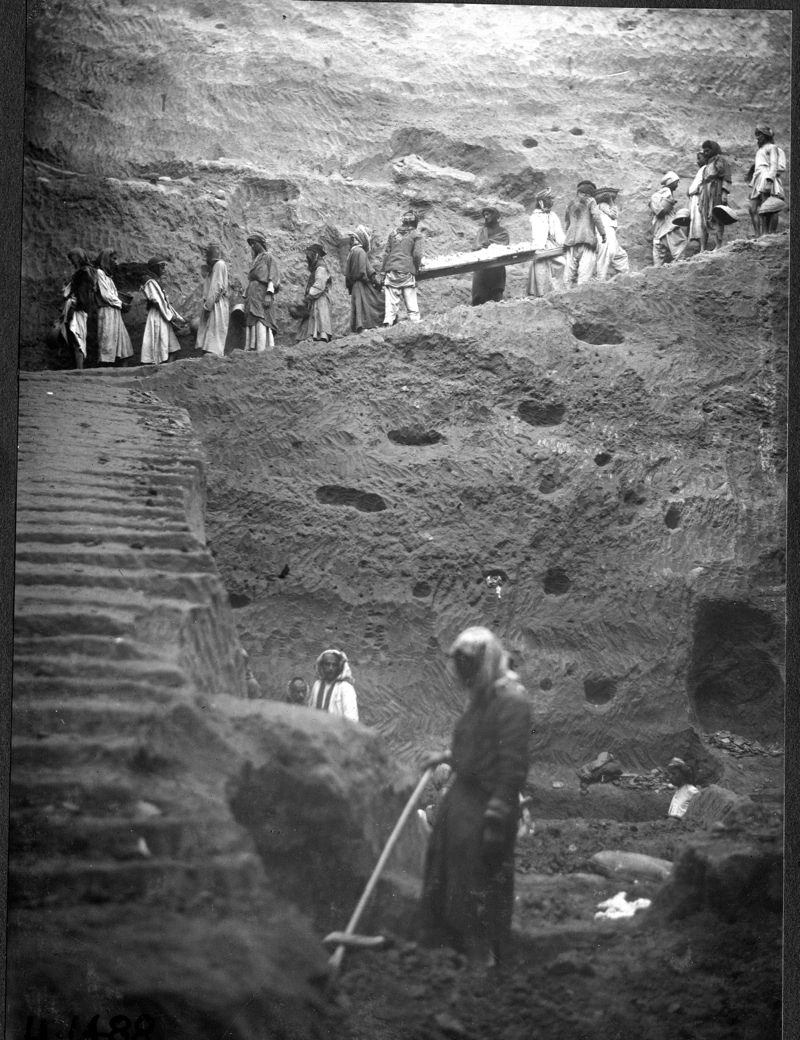
Workers carry the complete Ur skeleton on its board up 50 feet (15 meters) of carved stairs and out of Pit F.
Field Map
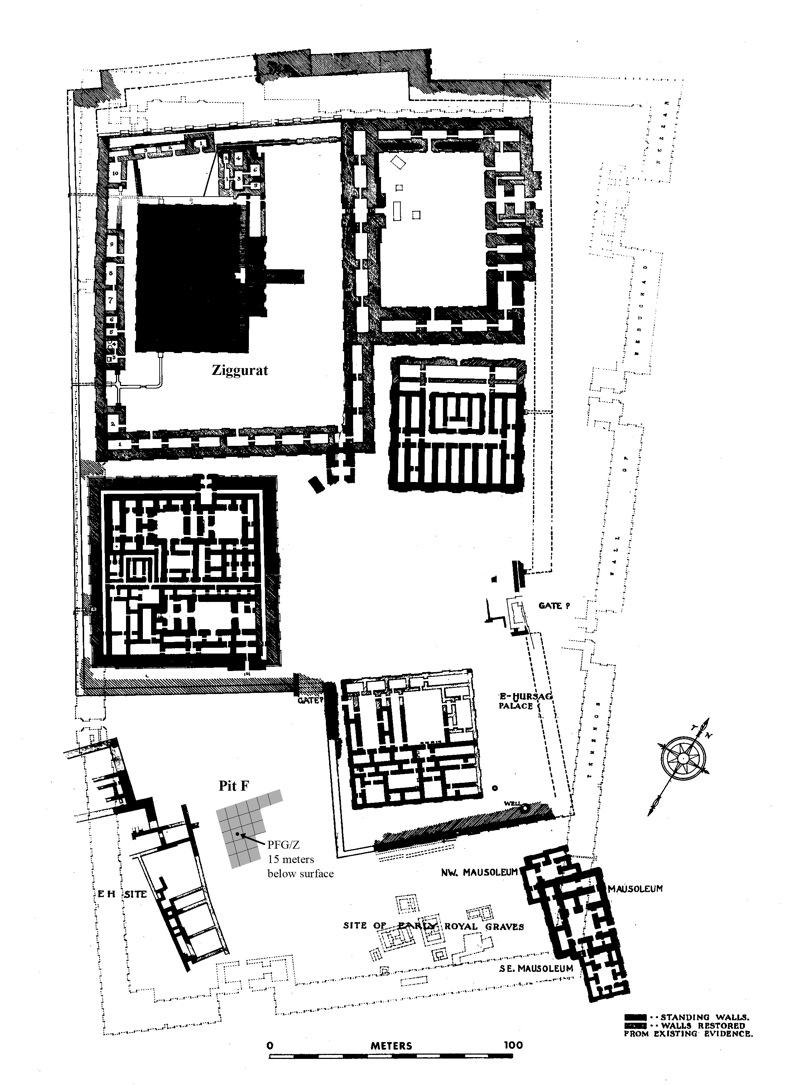
Pit F and the burial that held the 6,500-year-old skeleton shown here in a field map of the Ur site in Iraq. The buildings occurred some 2,000 to 2,500 years later than the burial, but they reveal the pit in relation to the famous Ziggurat and Royal Cemetery.
Field Drawing
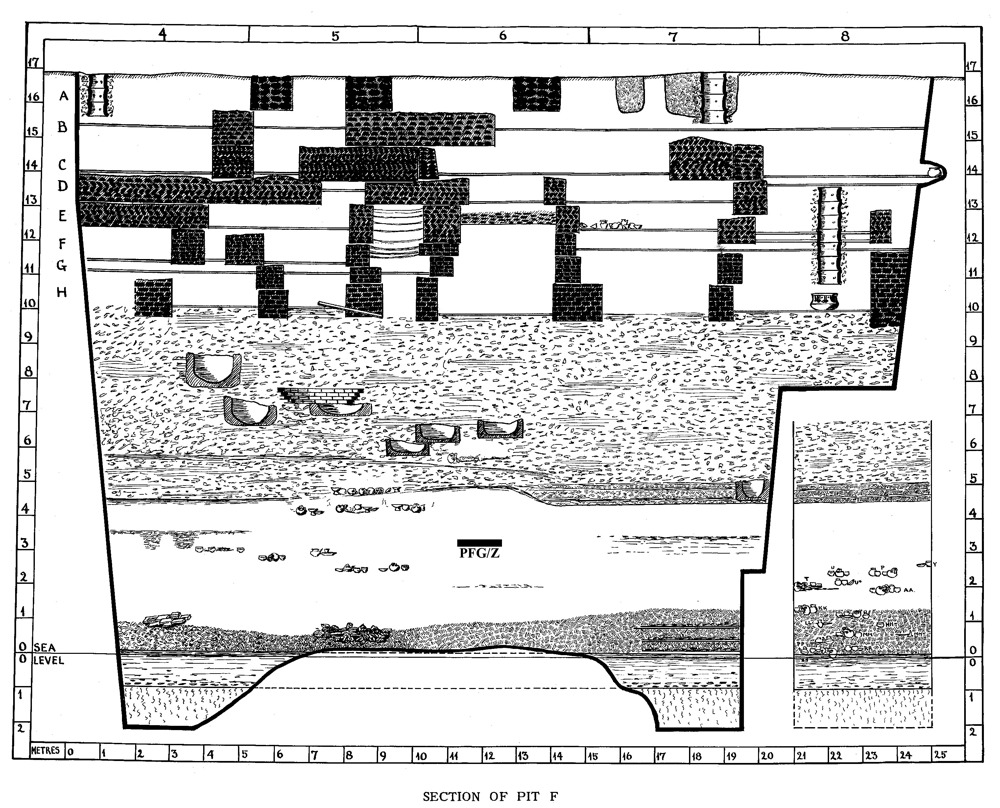
The skeleton was discovered beneath the Ur site, about 10 feet (3 meters) above sea level within a silt layer. The top of the pit was at 56 feet (17 m), but the ground for most of the site was another 3 feet (1 m) higher still.
Field Lists
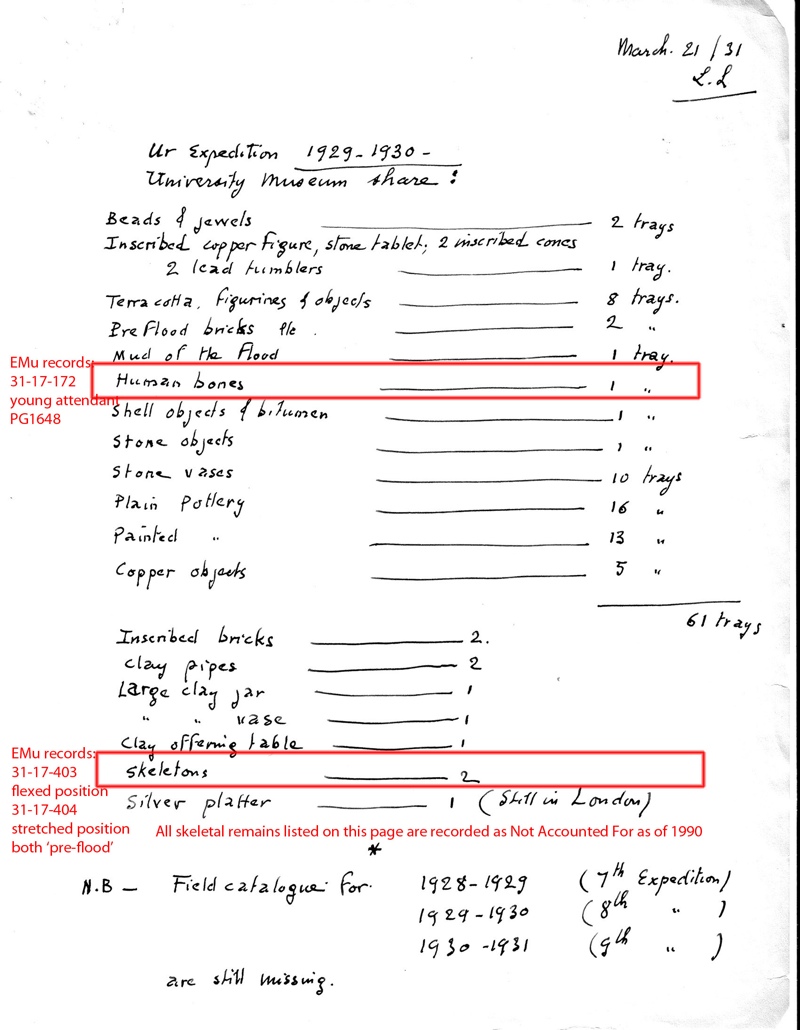
Father Legrain's division of finds list from the 1929/30 season, with notations placed by Dr. Hafford.
Jeanna Bryner is managing editor of Scientific American. Previously she was editor in chief of Live Science and, prior to that, an editor at Scholastic's Science World magazine. Bryner has an English degree from Salisbury University, a master's degree in biogeochemistry and environmental sciences from the University of Maryland and a graduate science journalism degree from New York University. She has worked as a biologist in Florida, where she monitored wetlands and did field surveys for endangered species, including the gorgeous Florida Scrub Jay. She also received an ocean sciences journalism fellowship from the Woods Hole Oceanographic Institution. She is a firm believer that science is for everyone and that just about everything can be viewed through the lens of science.









